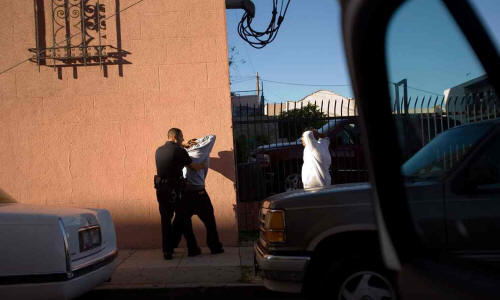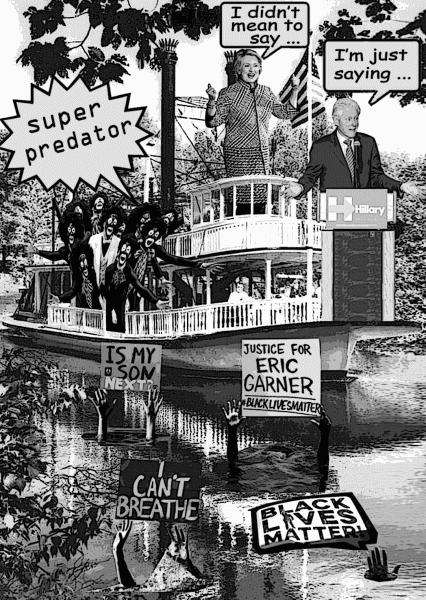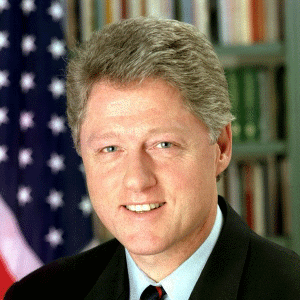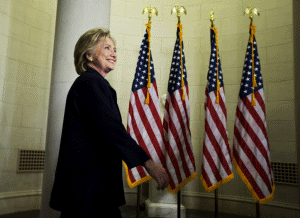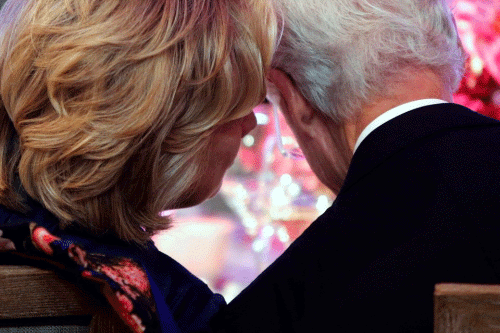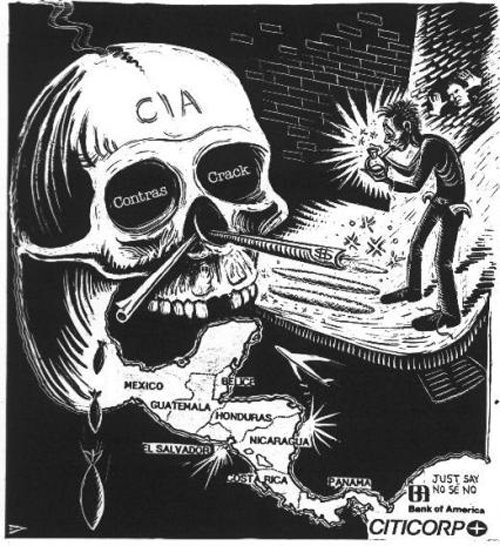by Ring Wing Watch
April 15, 2016
NOTICE: THIS WORK MAY BE PROTECTED BY COPYRIGHT
YOU ARE REQUIRED TO READ THE COPYRIGHT NOTICE AT THIS LINK BEFORE YOU READ THE FOLLOWING WORK, THAT IS AVAILABLE SOLELY FOR PRIVATE STUDY, SCHOLARSHIP OR RESEARCH PURSUANT TO 17 U.S.C. SECTION 107 AND 108. IN THE EVENT THAT THE LIBRARY DETERMINES THAT UNLAWFUL COPYING OF THIS WORK HAS OCCURRED, THE LIBRARY HAS THE RIGHT TO BLOCK THE I.P. ADDRESS AT WHICH THE UNLAWFUL COPYING APPEARED TO HAVE OCCURRED. THANK YOU FOR RESPECTING THE RIGHTS OF COPYRIGHT OWNERS.
The Manhattan Institute is an increasingly prominent conservative think-tank that promotes limited government and free-market idealism. The organization has attacked minority-focused policies including affirmative action, civil rights initiatives, and immigrant support programs as obstacles to full social integration and to the benefits of the market system. The Institute heavily promotes school vouchers, saying that competition as the best way to improve public schools.
52 Vanderbilt Avenue
New York, NY 10017
212-599-7000
http://www.manhattan-institute.org
Chairman: Dietrich Weismann
President: Lawrence J. Mone
Founded/Place: 1978— New York
Board of Trustees: Byron R. Wien, Roger Hertog, Charles H. Brunie, Robert J. Appel, Eugene D. Brody, Christopher H. Browne, Andrew Cader, Timothy G. Dalton, Jr., Michael J. Fedak, Peter M. Flanigan, Mark Gerson, William B. Ginsberg, Maurice R. Greenberg, Fleur Harlan, H. Dale Hemmerdinger, John W. Holman, Jr., Bruce Kovner, William Kristol, Frank J. Macchiarola, Rodney W. Nichols, Edward J. Nicoll, Peggy Noonan, Joseph H. Reich, Richard Reiss, Jr., Joseph L. Rice, III, Frank E. Richardson, Robert Rosenkranz, Nathan E. Saint-Amand, MD, Andrew M. Saul, Paul E. Singer, Robert Skidelsky, Thomas W. Smith, William K. Tell, Jr., Thomas J. Tisch, Donald G. Tober, Bruce G. Wilcox, Kathryn S. Wylde.
Finances: In 2005; $17,555,461 in assets; $ 13,296,150 in revenue; $ 10,083,160 in expenses
Publications: City Journal
Affiliate Groups: An associated member of the State Policy Network, a national network of state-based right-wing organizations in 37 states as well as prominent nationwide right-wing organizations. Through its network SPN advances the public policy ideas of the expansive right-wing political movement on the state and local level.
Purpose
A think tank focused on promoting free-market principles whose mission is to "develop and disseminate new ideas that foster greater economic choice and individual responsibility."
Activities
• A staff of senior fellows and writers contribute to the Manhattan Institute's City Journal and compose books, reviews, lectures and articles to promote the organization's views. The organization holds several high profile lecture series and policy forums and has hosted policy speeches by Bush administration officials and Republican presidential candidates.
• The Center for Civic Innovation focuses on improving the quality of life in cities by turning away from government policies and giving power to people closest to each specific problem, like parents, police, and ministers. The Center advocates for school vouchers and greater educational accountability.
• The Center for Race and Ethnicity seeks to examine prevalent issues within minority communities and criticizes relevant government policies. The Center argues that many government social programs act as barriers toward fostering a greater sense of individual responsibility and entrepreneurial spirit within minority communities.
• Many of the Center's writers attribute the socio-economic problems of the black community to an overriding sense of victimization, a reliance on government social programs, and a culture adverse to education and individualist social advancement. Accordingly, they contend that government programs such as welfare and affirmative action reinforce the community's sense of dependence and victimization.
• While many of the Center's writers do not hold an anti-immigration position, the Center opposes government programs intended to accommodate immigrant concerns, such as bi-lingual education. They argue that such policies stand in the way of Hispanic integration and deprive immigrant communities from the full benefits of America's market system.
Controversial Fellows
• Charles Murray served as a visiting fellow from 1981-1990. Murray later authored the controversial 1994 work, The Bell Curve, in which he argues that the gap between black IQ scores and white and Asian IQ scores in America cannot be explained by social factors and subsequently forwards the idea of genetic intelligence differences between races.
• Abigail Thernstrom serves as a senior fellow at the Institute. She has advanced controversial opinions about the state of American race relations and serves on the U.S. Commission on Civil Rights. She was one of only two members to dissent from the Commission's eight member panel in finding evidence of racially-based election irregularities regarding the 2000 election in Florida.
Funding
Major contributors include Exxon Mobil, Chase Manhattan, Bristol-Myers Squibb, Lilly Endowment, Lynde and Harry Bradley Foundation, William and Flora Hewlett Foundation, Sarah Scaife Foundation, Roe Foundation, Smith Richardson Foundation.
History
The Manhattan Institute originated in the late 1970s as a conservative, free-market think tank with a focus toward addressing urban social problems in New York City. Playing a large role in developing and influencing the policies of Mayor Giuliani, the organization rose to national prominence during New York City's 1990s revival as it advocated the privatization of sanitation services and infrastructure maintenance, deregulation in the area of environmental and consumer protection, school vouchers and cuts in government spending on social welfare programs. The Manhattan Institute subsequently became one of the foremost policy institutions with regard to urban social issues such crime, education, welfare, and race relations. Under the Bush Administration, the Institute has gained increased standing in a wider range of issues and has established itself as one of the preeminent conservative think-tanks, having hosted policy speeches by then-National Security Advisor Condoleezza Rice in 2002 and both President Bush and Vice-President Cheney in 2006.
Quotes
• "...I want to thank the Manhattan Institute's support for pro-growth economic policies, policies that really send a clear signal that we are still the land of dreamers and doers and risk-takers." - George W Bush; New York, Jun 27, 2006
• "For twenty-five years, the Manhattan Institute has confronted old problems with fresh thinking. Many of the Institute's emblematic ideas—from the notion that low taxes encourage businesses to the concept that police should be treated with respect—were originally greeted with skepticism but have since been embraced by well-run cities everywhere. Congratulations on a quarter century of making a difference." - Rudolph W. Giuliani
• "This is a place of tremendous creativity, of original thinking, and of intellectual rigor. The scholars of the Manhattan Institute have shown, time and again, the power of good ideas to shape public policy and to have an impact on the lives of people here in New York and across the nation. You have made enormous contributions to the betterment of the city and the policy debate nationwide. The Manhattan Institute is greatly admired in the country, and rightly so. I congratulate you for building such a fine reputation, and for maintaining it over the years." - Dick Cheney; New York, Jan 16, 2006

